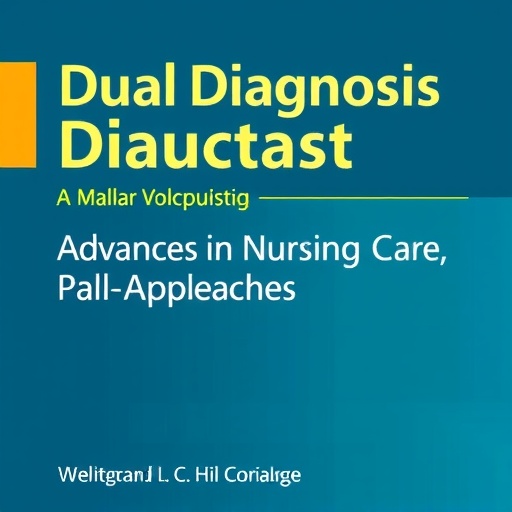In a groundbreaking study authored by Bergo et al., the increasing urgency to address Alzheimer’s disease has catalyzed innovative approaches in neurodegenerative research. The focus of this research involves the detection of extracellular amyloid beta aggregates, one of the hallmark features of Alzheimer’s disease. Utilizing an Aducanumab-based synNotch receptor, researchers have embarked on an in vitro proof-of-concept study, heralding new pathways for diagnosing and potentially treating neurodegenerative disorders. This research is notable not just for its scientific merit but for its implications for patient care in a field that desperately needs advancements.
Alzheimer’s disease continues to ravage millions of lives worldwide, with its complex pathology still not fully understood. Among its many features, the accumulation of amyloid beta plaques is believed to play a pivotal role in disease progression. Understanding how to detect these aggregates with greater specificity and sensitivity opens the door for early diagnosis, which is critical for the effective management of the disease. The Aducanumab-based synNotch receptor stands at the intersection of therapeutic innovation and diagnostic readiness, poised to offer healthcare providers a powerful tool in their arsenal against Alzheimer’s disease.
At the core of the study is the unique design of the synNotch receptor. This receptor technology allows for precise targeting of amyloid beta aggregates in extravascular spaces, overcoming significant limitations of previous detection methods. Traditional imaging and diagnostic techniques often fall short in their ability to pinpoint these aggregates with sufficient accuracy, thereby delaying timely interventions. The authors of the study demonstrated how their engineered receptor could bind specifically to amyloid beta, offering a promising alternative to more invasive procedures that currently characterize Alzheimer’s diagnostics.
In vitro studies are vital for initial experimentation, as they provide a controlled environment to investigate the receptor’s efficacy. Throughout the testing phases, the response of the synNotch receptor to various concentrations of amyloid beta was meticulously documented. The ability to quantify these interactions not only serves as a benchmark for the reliability of this technology but also lays the groundwork for future clinical translations. The results indicate that the receptor not only binds effectively but does so with a specificity that stands to significantly enhance diagnostic accuracy.
Moreover, the implications of this research extend beyond mere detection. The incorporation of the Aducanumab-based synNotch receptor into clinical practices could revolutionize the way Alzheimer’s disease is approached holistically. With improvements in early detection capabilities, researchers hope to pave the way for new therapeutic strategies that can work concurrently with early diagnosis. Treating patients at the onset of pathology rather than during advanced stages of the disease could potentially alter the trajectory of Alzheimer’s progression, transforming the clinical landscape.
One of the most captivating aspects of this research is the potential adaptability of the synNotch receptor technology. Deploying such targeting mechanisms in other neurodegenerative diseases could similarly enhance diagnostic precision across various conditions. While the focus of the study is on amyloid beta in Alzheimer’s, there are a plethora of misfolded proteins involved in myriad neurodegenerative diseases, such as Tau in frontotemporal dementia, which could also benefit from similar innovations. As researchers continue to investigate, a new horizon of multi-pathological targeting could emerge.
Additionally, addressing the ethical considerations surrounding Alzheimer’s diagnostics is paramount. The emotional toll of an Alzheimer’s diagnosis is profound for patients and families alike. Tools that can empower early detection bring both benefits and responsibilities. The research conducted by Bergo et al. pushes forward the need to engage in ethical dialogues about the implications of early detection—considering how information is delivered and the psychological support required for families confronted with such a diagnosis is critical.
The study’s findings have already garnered considerable attention in the scientific community, prompting discussions among neurologists, technologists, and pharmaceutical companies eager to explore the therapeutic potential of this receptor technology. As the research progresses towards clinical trials, collaboration among these stakeholders will be crucial. The pathway from academic research to practical application is often fraught with challenges, yet the collaborative spirit displayed in this study may serve as a model for future interdisciplinary endeavors in Alzheimer’s research.
In conclusion, Bergo et al.’s pioneering work illuminates an optimistic avenue in the relentless battle against Alzheimer’s disease. The successful demonstration of the Aducanumab-based synNotch receptor as a reliable tool for detecting amyloid beta aggregates sets a new standard for future investigations in neurodegeneration. As the scientific community rallies around this innovative approach, one can only hope that the advancements will translate into real-world applications, providing families with the hope of timely diagnoses and potentially transformative therapies.
Innovation in neuroscience is not merely an academic pursuit; it has profound implications for lives touched by Alzheimer’s and other neurodegenerative diseases. The continuance of such studies will not only refine our understanding of disease mechanisms but will enhance our ability to respond more effectively, offering a brighter future for those affected.
As we look forward, the journey from in vitro findings to clinical practice will undoubtedly encounter hurdles, yet the excitement generated by these developments cannot be overstated. The discourse surrounding amyloid beta detection is expanding, ushering in a new era where early intervention could become a reality. For individuals and families affected by Alzheimer’s, the stakes are high, and the promise of this research provides a renewed sense of hope in finding effective solutions.
As the study by Bergo et al. anticipates the next stages of testing and optimization, the global community remains vigilant and eager for updates. This represents a formidable stride in the ongoing quest against Alzheimer’s disease, and it is a clarion call for continued support and investment in neurodegenerative research. Perhaps we are on the brink of a breakthrough, one that could redefine our approach to Alzheimer’s and instigate a broader understanding of the complexities of brain health in general.
In summary, the in vitro proof-of-concept study sheds light on the promising capabilities of Aducanumab-based synNotch receptors in the context of Alzheimer’s disease diagnostics, encouraging further exploration and application of this technology in the years to come. The successful detection of amyloid beta aggregates could be the key to unlocking new therapeutic avenues and fundamentally altering how we approach one of the most daunting challenges in modern medicine.
Subject of Research: Detection of extracellular amyloid beta aggregates using an Aducanumab-based synNotch receptor.
Article Title: Detection of extracellular amyloid beta aggregates by an Aducanumab-based synNotch receptor: an in vitro proof-of-concept study.
Article References: Bergo, N.J., Lee, S., Siebrand, C.J. et al. Detection of extracellular amyloid beta aggregates by an Aducanumab-based synNotch receptor: an in vitro proof-of-concept study. J Transl Med 23, 1255 (2025). https://doi.org/10.1186/s12967-025-07324-2
Image Credits: AI Generated
DOI: https://doi.org/10.1186/s12967-025-07324-2
Keywords: Alzheimer’s disease, amyloid beta, synNotch receptor, Aducanumab, neurodegenerative diseases, diagnostics, early detection, research innovation.
Tags: Aducanumab-based therapiesAlzheimer’s disease pathologyAlzheimer’s disease researchamyloid beta aggregate detectionearly diagnosis of Alzheimer’sextracellular amyloid beta accumulationimplications for patient carein vitro proof-of-concept studiesinnovative approaches in neurobiologyneurodegenerative disorder diagnosticssynNotch receptor technologytherapeutic advancements in Alzheimer’s





